机车轮对轴承压装机液压系统设计(含CAD零件图和装配图)
无需注册登录,支付后按照提示操作即可获取该资料.
机车轮对轴承压装机液压系统设计(含CAD零件图和装配图)(开题报告,中期报告,外文翻译,论文说明书16000字,CAD图12张)
摘 要
轮对轴承压装机是用于铁路车辆滚动轴承压装的专用设备,适用于铁路车辆新造及检修时压装轴承,被广泛应用于各个路局车辆维修、车辆制造厂生产,其对国民生产有着重要的意义。现如今的铁路速度越来越快,对轴承的要求越来越高,而轴承的压装是铁路安全的关键。为了达到使原有轮对轴承压装机能够获得更可靠更优秀的性能,本次设计主要针对轮对轴承压装机进行设计,通过对轮对轴承压装机原有技术的改进(主要是液压系统的改进),实现对轮对轴承压装机轴承的准确压装,以便更进一步提高行车的安全性与平稳性。
关键词: 滚动轴承;压装;液压系统
Loader hydraulic system design of locomotive wheelset bearing pressure
Abstract
Wheel axle pressure installed special equipment for railway vehicles pressing the bearing press-fit bearings suitable for new-building and maintenance of railway vehicles. Widely used in various railway administrations of its gross national product of great significance . It is widely used , and widely used in vehicle factories, vehicle sections, vehicle overhauling factories and mine railcar companies etc. In this thesis, it is aimed to design and improve the original while axle pressure installed (improve the original design of hydraulic pressure system)to get a new device has reliable and excellent property. To get a accurate push mounting with the wheel axle pressure installed, in order to further increase the security and smooth.
Keywords: Taper rolling bearing;Push mounting;Hydraulic pressure system
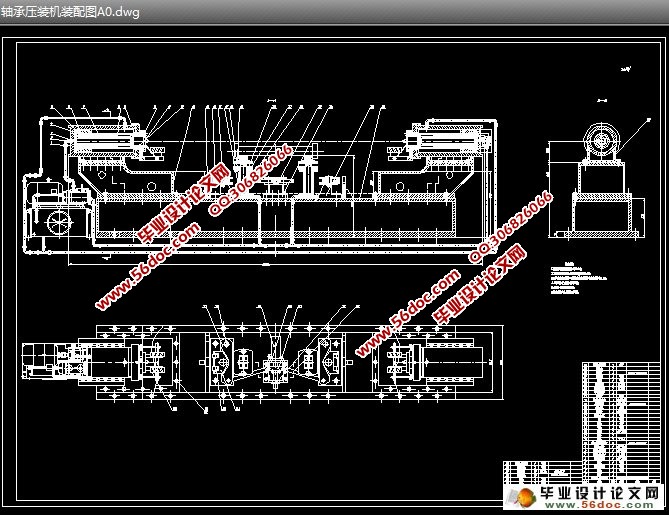
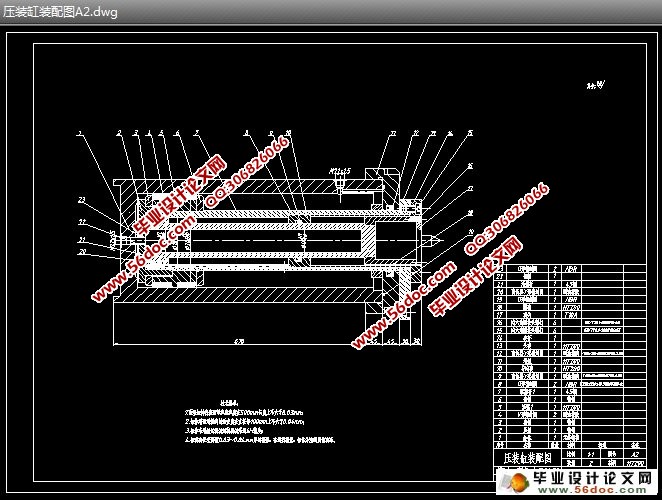
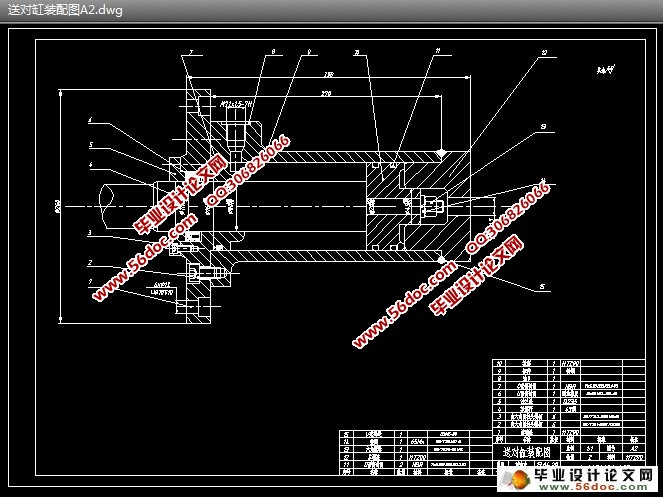

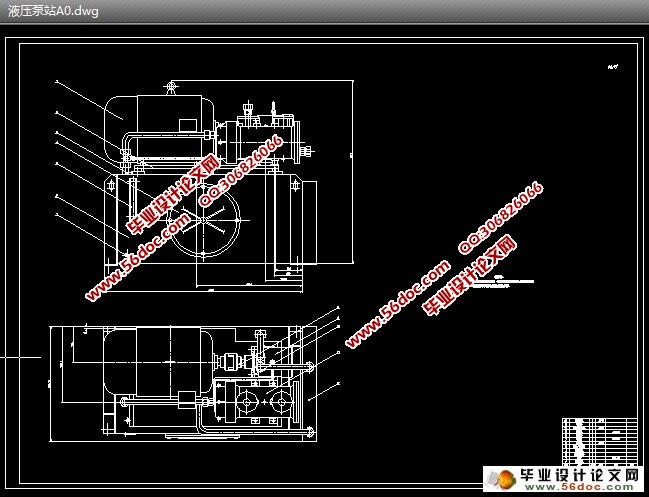
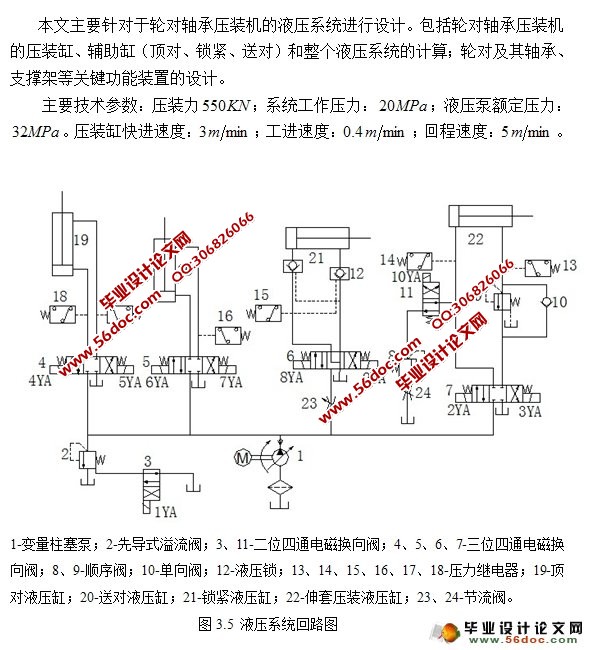
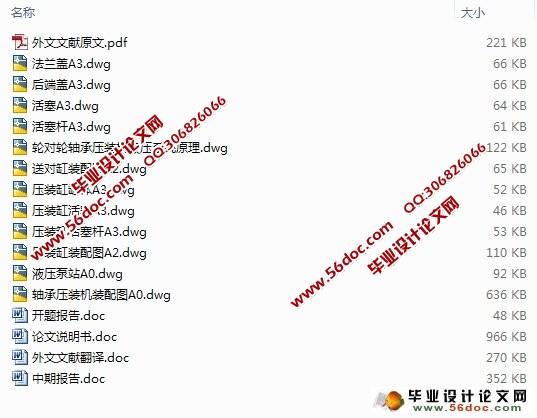
目 录
1 绪论 1
1.1 背景及研究意义 1
1.2 轴承简介 2
1.3 研究现状 2
1.4 本文研究内容 3
2 轮对轴承压装机工作原理 4
2.1 轮对轴承压装机的工作原理 4
3 液压系统的设计 6
3.1 液压回路设计和回路工作原理分析 6
3.1.1 顶对回路 6
3.1.2 送对回路 7
3.1.3 锁紧回路 7
3.1.4 伸套压装回路 8
3.1.5 液压系统原理图 9
3.1.6 该液压系统技术特点 11
3.2 液压系统工作要求 11
3.2.1 液压传动系统的型式 11
3.2.3 轴承压装机的液压传动特点 12
3.3 确定液压缸的几何参数 13
3.3.1 伸套压装缸尺寸计算 13
3.3.2 压装缸壁厚和外径的计算 14
3.3.3 辅助缸(顶对缸,送对缸,锁紧缸)壁厚和外径的计算 15
3.3.4 计算在各阶段液压缸所需的流量 15
3.4 液压系统的压力损失计算 16
3.5 液压泵和电机的相关计算 17
3.5.1 确定液压泵的流量 17
3.5.2 选择液压泵的规格 17
3.5.3 与液压泵匹配的电动机的选择 18
3.6 液压阀的选择 18
3.6 液压缸结构设计 20
3.7 其他附件说明 21
4 轮对轴承压装机结构设计 22
4.1 轮对轴承压装机的布置 22
4.2 床身设计 22
4.2.1 底座设计 22
4.2.2 支座设计 23
5 油箱和其它液压辅助元件的设计 24
5.1 液压油箱有效容积的计算 24
5.2 液压油箱的外形尺寸 24
5.3 液压油 25
5.3.1 液压油的品种 25
5.3.2 液压油的粘度 25
5.4 过滤器 26
6 液压站的设计 27
6.1 液压泵的安装方式 27
6.2电动机与液压泵的连接方式 27
6.3液压站结构设计的注意事项 28
总结 29
致谢 30
